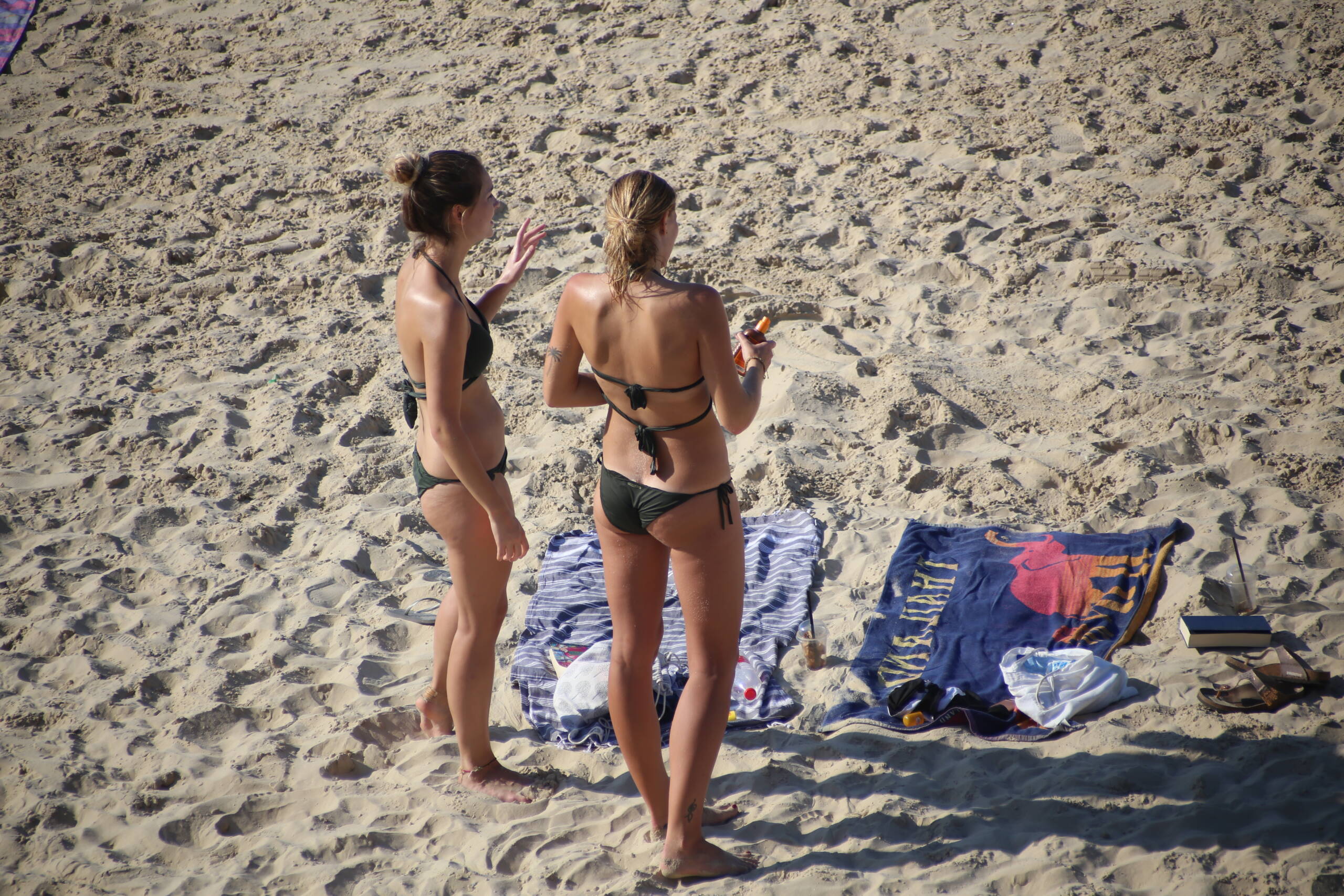On a bright beach afternoon, two friends stand on warm golden sand, the sea breeze drying the salt on their skin while they negotiate that most universal of travel rituals: sunscreen application. Their towels—one striped, the other adorned with a red bull on navy blue—lie like territory markers on the sand, half-buried under scattered belongings. One holds a bottle of sunscreen, the other gestures mid-conversation, perhaps debating SPF strength, or laughing at the eternal paradox of sun worshippers slathering themselves in chemicals designed to shield them from the very rays they crave.

Travelers often overlook sunscreen as a story in itself, treating it merely as a chore, an item to be packed between sandals and swimsuits. But each bottle is a diary of intent. The thick, coconut-scented creams are for the romantics who dream of postcard tans. The high-tech gels with mineral zinc are for the cautious, who have read too many dermatology blogs and fear invisible UV more than visible sharks. The cheap sprays are for the reckless optimists who believe a light mist will outwit a burning sun. Sunscreens are maps of personality and travel philosophy, invisible ink on our journeys.
What’s fascinating is how sunscreen isn’t just about skin but about culture. In southern Europe, a bronze tan is considered a souvenir more precious than keychains. In Japan, sunscreen is paired with parasols and long sleeves, the obsession being not golden glow but porcelain pallor. On Australian beaches, sunscreen is worn like armor, layered thick and often, because here the sun is less romance and more predator. Every country’s travel guide might as well include a sunscreen ritual: “How they block the sun says more than how they cook their meals.”
There is also the paradox of travel photography in the sunscreen era. A good lens captures glistening shoulders, the oily shine of SPF catching late afternoon light, reflecting it back in a way no filter can match. Sunscreen becomes part of the aesthetic, shaping how skin tones appear against towels, sand, and sea. The two women in the photograph above, debating under the heat, are unwitting models of this sunscreen choreography: one applying, one waiting, both embodying a timeless travel scene where leisure collides with survival instincts.
And then there is the irony of sunscreen as a time machine. Every application delays wrinkles and burns, but it also delays memories. When you return home, the shade of your skin is a story of what you resisted and what you allowed. The missed patch on the shoulder is a sunburned exclamation mark, a reminder of distraction. The even bronze is proof of discipline. The pale skin under straps is a secret map of bikini outlines, showing exactly how you lived those hours by the sea. Sunscreen is not just protection; it’s narrative editing.
So when you pack for your next trip, don’t treat sunscreen as background luggage. See it as the first page of your travelogue. Each dollop on your arm is a small declaration: I want to wander under this sun a little longer, without penalty. And when you see others on the beach, pausing mid-conversation to pass a bottle, remember—you are watching a ritual as old as modern travel itself, a ceremony of transience, a sunscreen liturgy whispered into the sand.
Leave a Reply